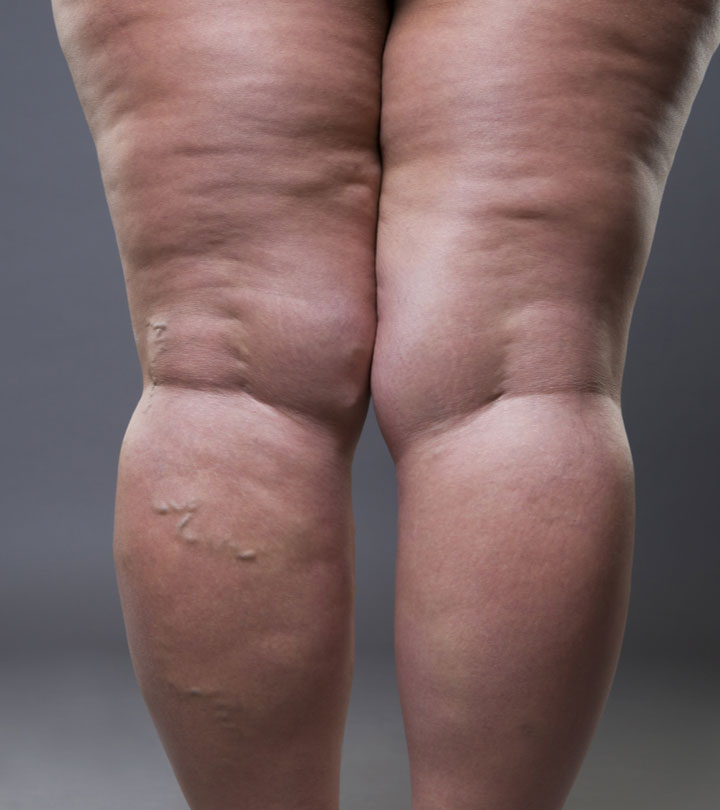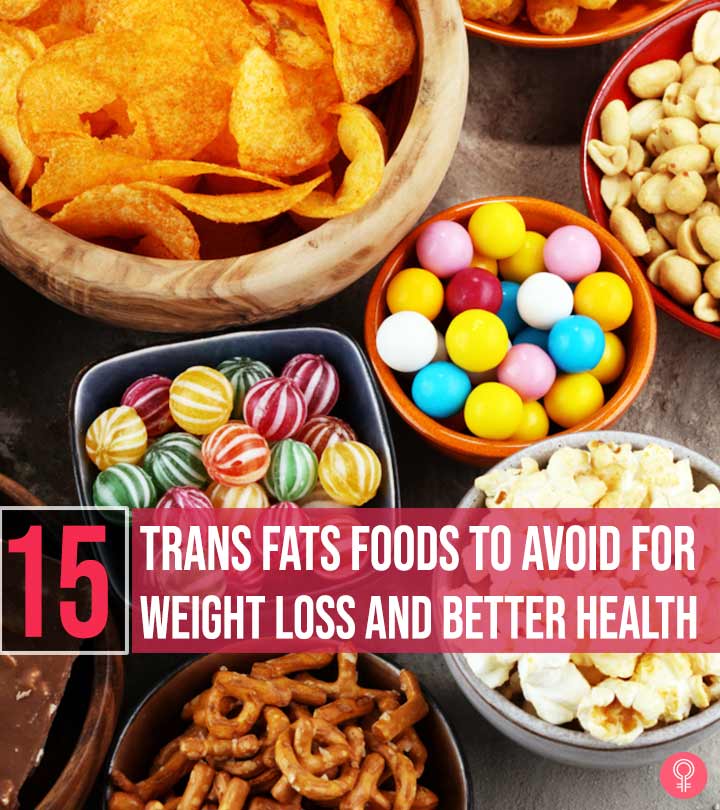
Lipedema, often misdiagnosed as obesity, primarily affects women. It is a progressive condition characterized by a disproportionate accumulation of fat in the lower limbs. Regular low-impact exercise and a change in diet have been shown to help you deal with lipedema better. Read on to know what food products you should avoid in the lipedema diet, and what kind of diet and exercise can help you reduce the pain and discomfort of lipedema.
In This Article
What Is Lipedema?
Lipedema or lipoedema is a disease of inflamed fat cells and disproportionate fat deposits, especially in the lower half of the body. It primarily affects women and causes a fat build-up in the tissues of the hips, pelvis, and legs. Strangely, it doesn’t affect the feet and hands. Women with lipedema have larger hips and legs in comparison to their upper bodies. While initially it might be mistaken as obesity, it can lead to unbearable pain and even immobility due to the swelling of the legs (1). Hormonal fluctuations during menstrual cycles or menopause could potentially make the symptoms worse.
Lipedema is classified into one of the following five types, based on the location of the fat deposits in the body (1):
Type 1 – buttocks, hips, and pelvis.
Type 2 – buttock to the knees.
Type 3 – buttocks to the ankles.
Type 4 – includes upper arms as well.
Type 5 – only the lower legs.
Currently, there are no particular lab tests or imaging exams to confirm the diagnosis of lipedema. It is usually done based on the woman’s medical and family history and physical examination of the symptoms of lipedema, as discussed below.
Symptoms Of Lipedema
Most women with lipedema would have uneven fat deposits in their lower bodies. There are some other common symptoms that might accompany lipedema, but not all women must have them. As per the Genetic And Rare Diseases Information Centre (GARD), these symptoms may include (1), (2)
- Painful Fat: The fat build-up in the hips and legs might become painful and tender to touch and any sort of pressure.
- Easy Bruising: The affected parts of your body might bruise easily. Tiny spider veins that run close to the skin surface might contribute to this bruising.
- Upper Arm Fat: About a third of women affected with lipedema might also have excess fat build-up in their upper arms.
- Hard Nodules: Pea-sized hard nodules or lumps of fat can be felt under the skin when massaged.
- Cuffing At Wrist Or Ankle: Since lipedema does not affect the hands and feet, the swollen legs and arms might look cuffed, especially in later stages of the disease.
- Cold Skin: The skin of the affected area of the hips and legs might seem cooler to touch than the rest of the body.
- Immobility: With the worsening of the condition, the increase in leg size, heaviness, and the associated pain might lead to joint damage and changes in your gait, making it difficult to walk at all.
- Fibrosis: Chronic inflammation in lipedema might also lead to fibrosis or the formation of scar tissue in the fat deposits, further hindering lymph circulationi XThe movement of lymph from the body tissues into the lymphatic vessels to help protect the body from foreign cells. .
- Lymphedema: With the progress of the condition, lymphedema (swelling due to lymph fluid blockage) might also occur in the lower limbs and hip area (3).
Apart from the above symptoms, women with lipedema have been found to be more vulnerable to higher rates of migraines, hypothyroidismi XDeficiency of thyroid hormones that causes growth retardation, poor mental development, and weight gain. , depression as well (4). But, strangely enough, they may have lower risks of high blood pressure, type 2 diabetes and metabolic syndromei XA group of conditions that lead to an increased risk of diabetes, heart disease, and stroke. since most of the fat is deposited in the legs and hips, and not around the visceral organs (5).
Lipedema, with its life-altering symptoms, might take a toll on your physical and mental well-being. However, with proper treatment, exercise, and diet changes, the above symptoms of lipedema can be managed to a certain extent. So, what kind of diet can help reduce fat deposits, pain, and fluid retention without affecting their metabolism?
What Is The Best Diet For Lipedema?
While you may not see an immediate improvement in your condition, there are a few food products that might cause lipedema to worsen. You should avoid the consumption of:
- Pasteurized dairy products (milk, cheese, yogurt)

Shutterstock
- High-fat animal meat (bacon, red meat, sausage)
- Simple sugars and carbohydrates (white rice, pasta, potatoes, honey, or cereals)
- Highly processed and salty foods ( beef jerky, smoked meat, canned meat)
- Processed or refined flour products (white tortillas or bread)
Apart from these basic dietary changes, many women with lipedema have found considerable improvement in their symptoms on following the ketogenic diet (6).

Shutterstock
A ketogenic diet restricts the dietary intake of any form of carbohydrates such as sugar, rice, pasta, bread, potatoes, and most fruits. This results in a metabolic state called ketosis, wherein fat becomes the primary source of your body’s energy instead of glucose. But how does a ketogenic diet help improve the symptoms of lipedema? Is it really beneficial in dealing with stubborn fat, its associated pain, and fluid retention? Let’s find out.
Stylecraze SaysSeafood, eggs, green leafy vegetables, nuts, seeds, and berries are popular keto-friendly foods that may improve symptoms of lipedema.
Benefits Of The Lipedema Diet
While direct evidence is scanty, a few small studies, clinical trials, and anecdotal evidence suggest that a ketogenic diet may help reduce the fat buildup, pain, and discomfort associated with lipedema (6).
Some of the research pieces of evidence that state the beneficial effects of the ketogenic diet for lipedema are mentioned below.
- Helps Lose Weight

Shutterstock
When women with lipedema shift to a ketogenic diet, there is a resultant change in their metabolism. Their bodies are forced to metabolize fats instead of glucose to produce energy. This may lead to the burning up of some of the excess accumulated body fat. Many studies confirm that when people cut back on carbs completely and fill up on proteins and fats instead, they tend to eat less and lose weight (7), (8).
















